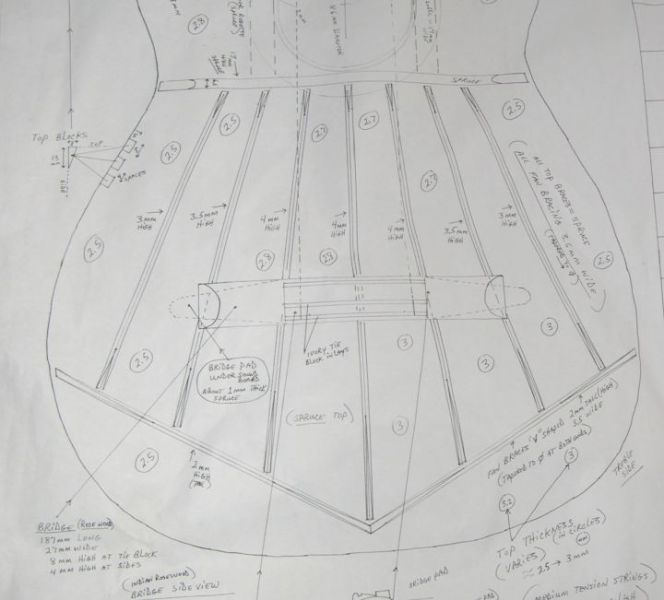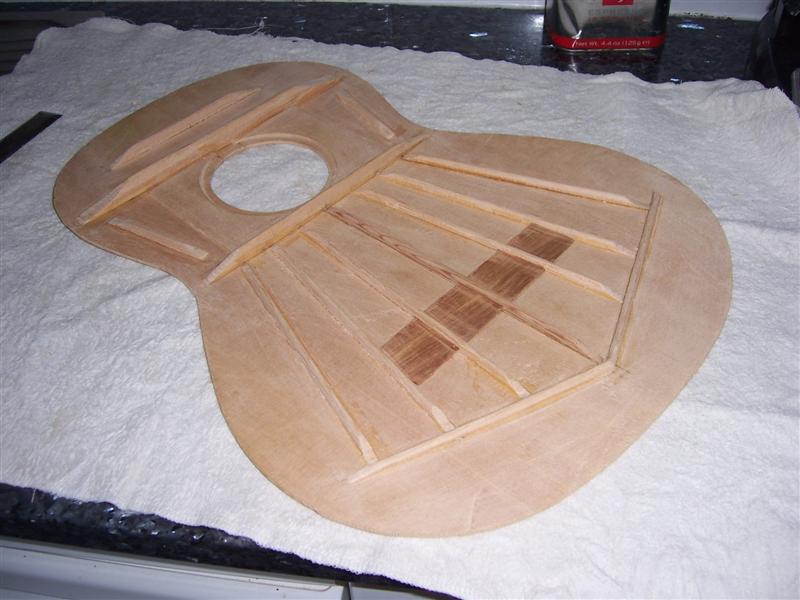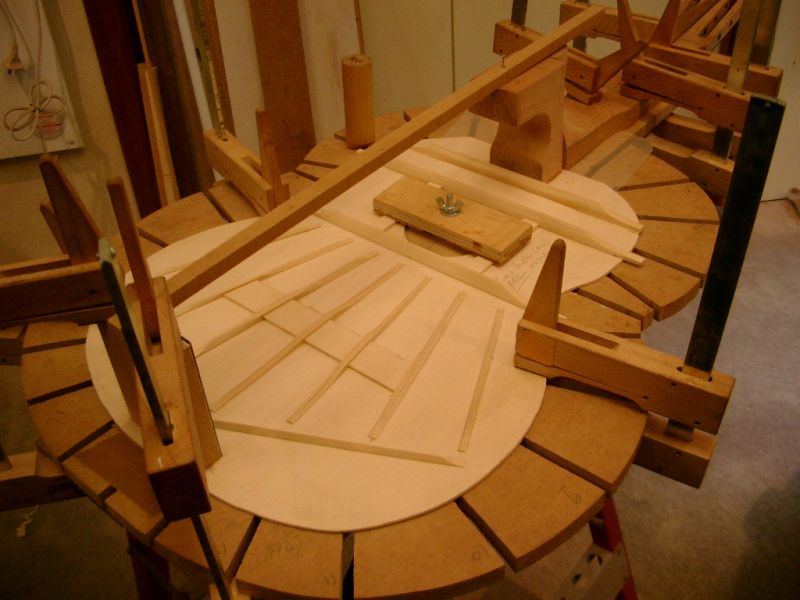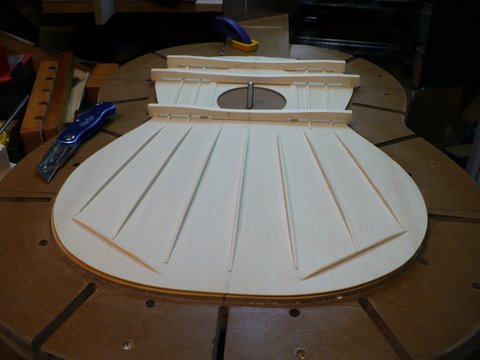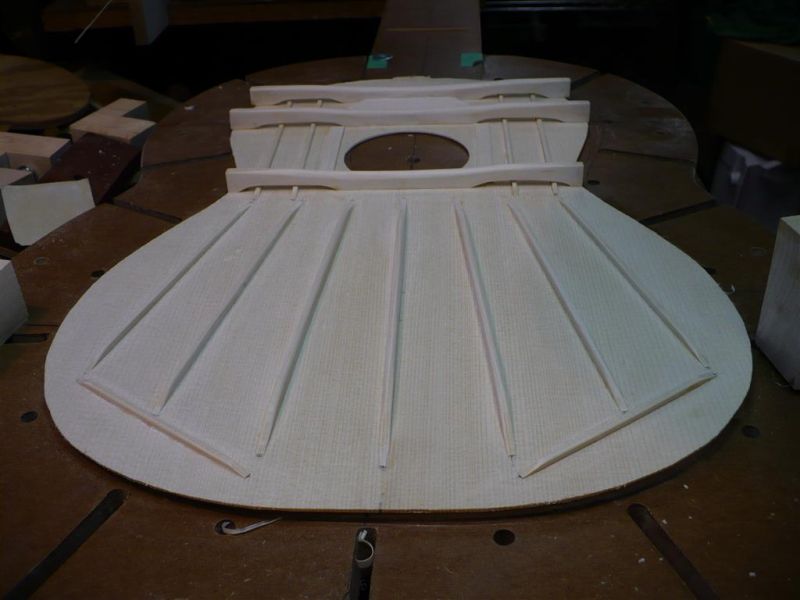Hey Sebastiaan
Up until a couple of weeks ago, what little experience I had was on fan braced classicals. I suspect that just about every luthier building these things has their own way of tuning the top, so here is my 5c worth from what I learned I the months I spent working with a very old cranky luthier.
Must of his tuning was done in a jig, this was just a simple solidly constructed tapered box with a guitar neck attached. It had a double ½ inch ply top with a hole cut in them 5mm smaller than his standard guitar profile (he had a few of these jigs for smaller guitars etc). Once he had the top braced and bridge fitted he would sandwich it between the tops of the jig and bolt them together. Think of it as a heavy duty backless guitar with the top held in place with a bolted flange. The first level of tuning was done by carving the braces, usually he would carve a bit then flip it over and pluck strings while feeling around the top for vibration then carve a bit more. Sometimes he would sprinkle tea on top to identify what was happening where when a note he wasn’t happy with was played (I never did figure out what the relationship between the tea leave pattern and where he carved or thinned was).
The second level of tuning was dune with a thumb plane and sandpaper. He would spend hours plucking, playing then planing and sanding. He told me that thinning the top was the only way to fine tune the sound and balance.
I’ve tried using sitka as a replacement top on a classical I fixed, it came out a bit flat and quiet, it was also very dead on the nylon strings. I ended up taking the top back off and changing the bracing, I removed the outer fan brace on the treble side and moved the brace next to it to split the difference. I thinned the top down to about 2.2 on average and as thin as 1.6mm around the edges and between the braces on the treble side. In the end it came up ok (not great, more the ‘god it could be better’ side of good) I think the sitka was just too stiff (it was a very fine grained stiff set). I’d suggest hard tension strings with a sitka top to try and overcome that lack of power in the nylon.
The bridge plate on a classical is usually spruce a couple of mm thick with the grain running opposite that of the top. The bridge and bridge plate are another tuning point, removing thickness from them at key locations can make a huge difference to the volume and balance.
I agree with what other have mentioned, the braces look way heavy. I don’t know what you have used for the bridge plate or how thick it is but if it isn’t a soft wood then I would be thinning it way down between the braces.
The photo below is from the plan I have that best matches the fan pattern you’re using. The thickness zones on it generally concur with where I’ve thinned when tuning spruce tops (WRC comes out totally different)… I don’t know what planes you are using but you should be able to pick up the brace sizes and top thickness zones from it (but you would need to go thinner with sitka). Hope this helps and if not that provides food for thought.
Cheers
James
